In this guide, I’ll clear up the confusion. I’ll give you an updated definition of demand generation, along with the components of a successful demand generation strategy. And finally, you’ll learn why demand generation is not the same as lead generation.
Table of Contents
- What is demand generation?
- Why is demand generation different from lead generation?
- Why are most lead generation strategies unsuccessful?
- Gated Content: Bad Practices vs. Good Practices
- The Role of Inbound Marketing in B2B Demand Generation
- The Role of Sales in B2B Demand Generation
- Metrics and KPIs for Measuring Success
What is demand generation?
Demand generation captures the umbrella of marketing programs that get customers excited about your company’s products and services without trying to explicitly sell to them.
Demand generation programs can help your organization reach new markets, promote new product features, build consumer buzz, generate PR, and re-engage existing customers. This includes things like ambassador programs, influencer partnerships, educational content campaigns, interactive webinars, and more.
Essentially, demand generation is a long-term, education-focused marketing strategy that prioritizes reaching and engaging “out of market” buyers.
The ultimate goal of B2B demand generation is remaining top of mind while your potential customers are not in a buying cycle — so that whenever the need arises, your product or service is immediately considered for purchase.
I’ve found what makes demand generation a distinct concept from other customer acquisition tactics is a commitment to long-term customer relationships and a strategic mindset.
Demand Generation Examples
1. HubSpot’s Inbound Marketing Strategy
HubSpot pioneered inbound marketing as a demand generation strategy by creating high-value educational content (blog posts, guides, webinars, and free tools) that nurtures potential customers long before they’re ready to buy. I’m biased, of course, as a writer for HubSpot, but I do believe there is a lot that we can learn from this strategy.
HubSpot offers free tools like a CRM and Website Grader, which introduce users to our ecosystem. These folks can then keep HubSpot top-of-mind when they need a paid solution. My favorite tool recently has been the AI Search Grader.
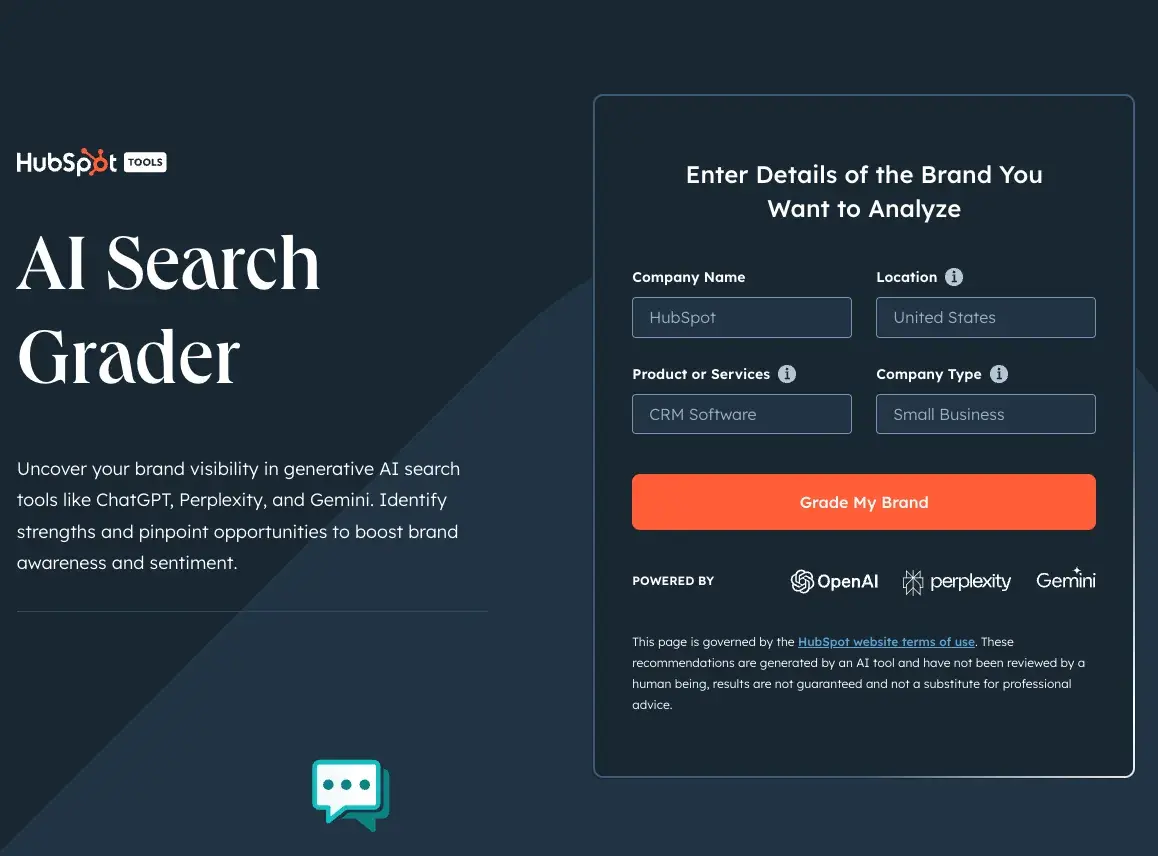
This strategy builds trust and authority over time rather than pushing for immediate conversions, making it a textbook example of long-term demand creation.
I also love when a product offers me genuine value upfront without pushing a product or sale immediately in my face.
2. Drift’s Conversational Marketing Approach
Drift disrupted traditional B2B marketing by shifting the focus from lead capture forms to real-time conversations via AI-powered chatbots and messaging.
Instead of gating content, Drift prioritized making it easier for potential customers to get answers quickly, reducing friction in the buyer journey.
I really appreciate their approach to thought leadership content, including books like Conversational Marketing, which positioned them as the go-to brand for real-time B2B customer engagement.
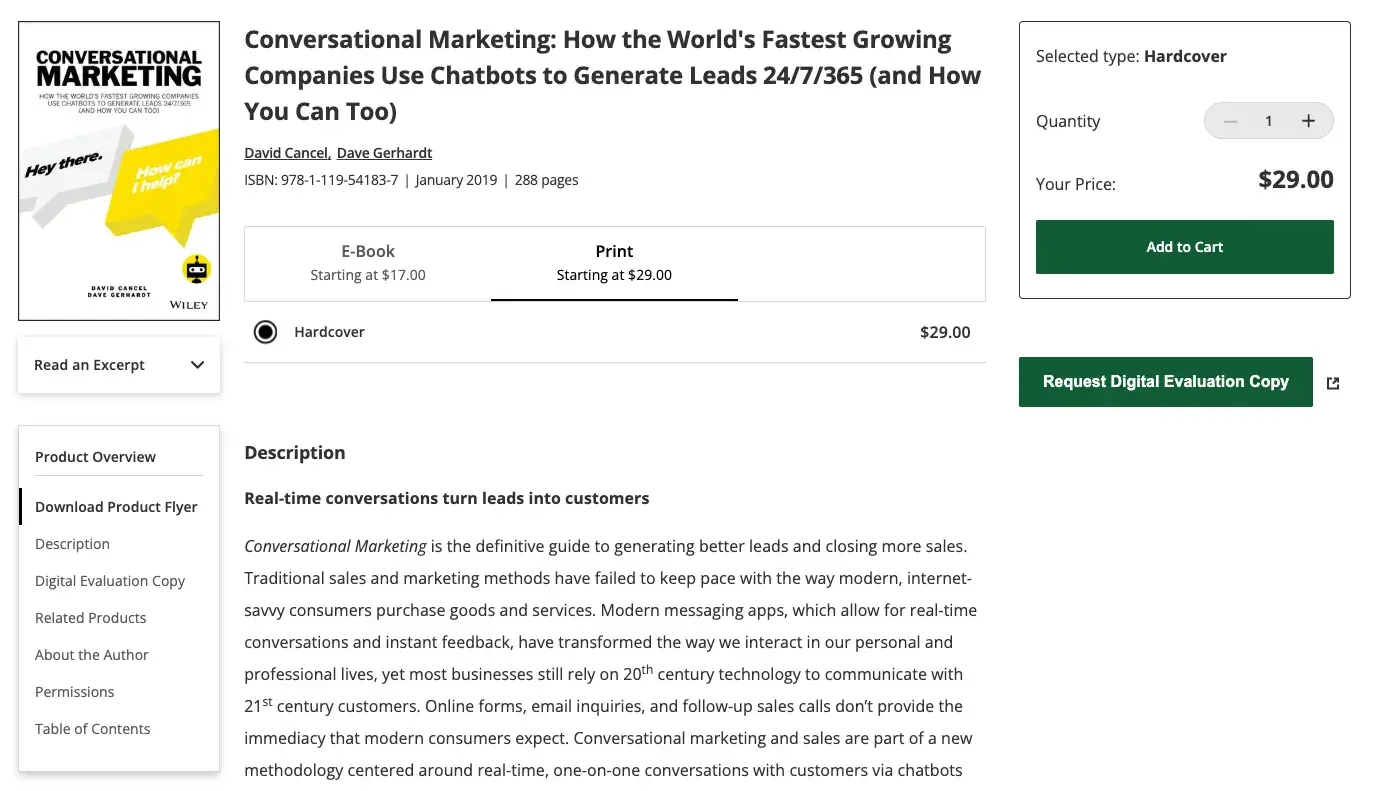
Drift’s approach aligns with modern buyers who prefer on-demand, interactive experiences rather than filling out forms and waiting for follow-ups.
3. Gong’s Data-Driven Demand Generation
Gong, a revenue intelligence platform, has built its demand generation strategy around original research and data insights, often using proprietary sales analytics to create compelling, shareable content.
They publish data-backed insights on LinkedIn, in newsletters, and on their blog, providing valuable information that naturally attracts their target audience.
I’m a sucker for new data or industry-insider information, so I think their State of Revenue Growth is the perfect example of how you can use proprietary research to serve as demand gen for your product.

I think Gong’s demand generation success lies in leveraging data to educate and create authority — a winning formula for credibility and engagement.
4. Notion’s Community-Led Growth
Notion, a productivity and workspace tool, focuses on community-driven demand generation by fostering an engaged user base that creates and shares templates, tutorials, and best practices.
They encourage user-generated content through Notion Ambassadors and Certified Consultants, who promote the tool organically.
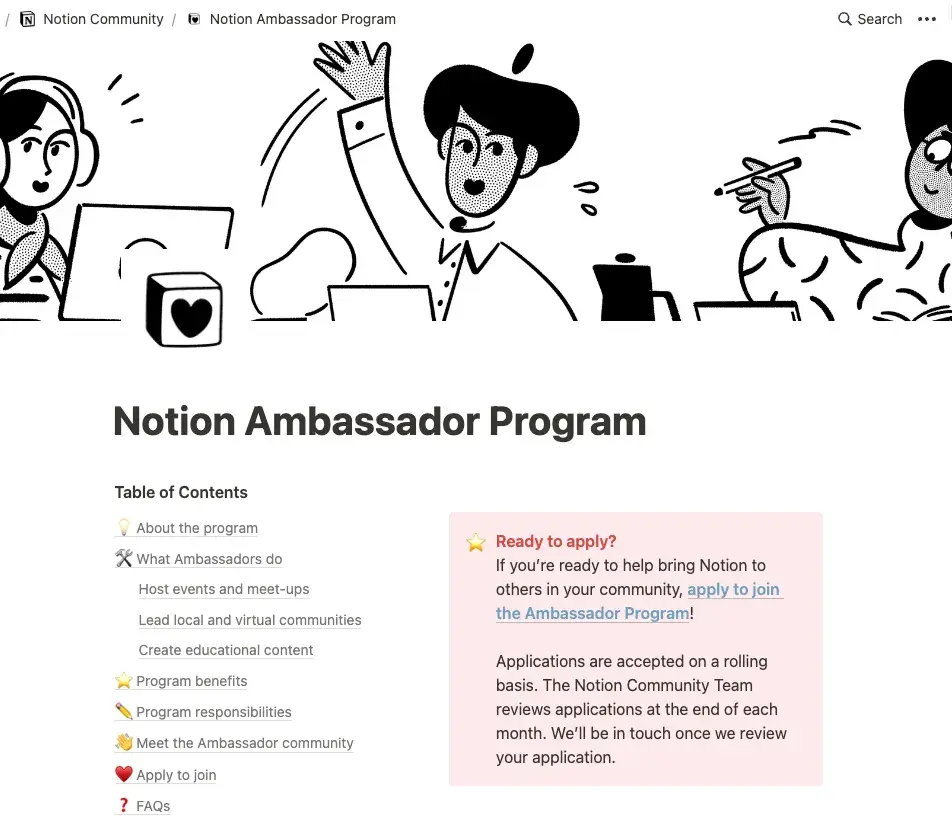
Their freemium model allows individuals to get hooked on Notion before upgrading to a paid plan, creating natural demand among teams and businesses. I can see firsthand how effective this model can be. Most everything I know about Notion is through peers who use it religiously and refer to it to me. Such an organic recommendations engine really can’t be beat.
By prioritizing word-of-mouth and community-driven growth, Notion fuels bottom-up adoption — where individuals introduce the tool to their workplaces.
Why is demand generation different from lead generation?
Demand generation marketing is about educating your audience with no expectation in return. Meanwhile, lead generation is optimized for capturing contact information — but prematurely pushes non-solution seeking people to sales automation workflows, which is highly ineffective.
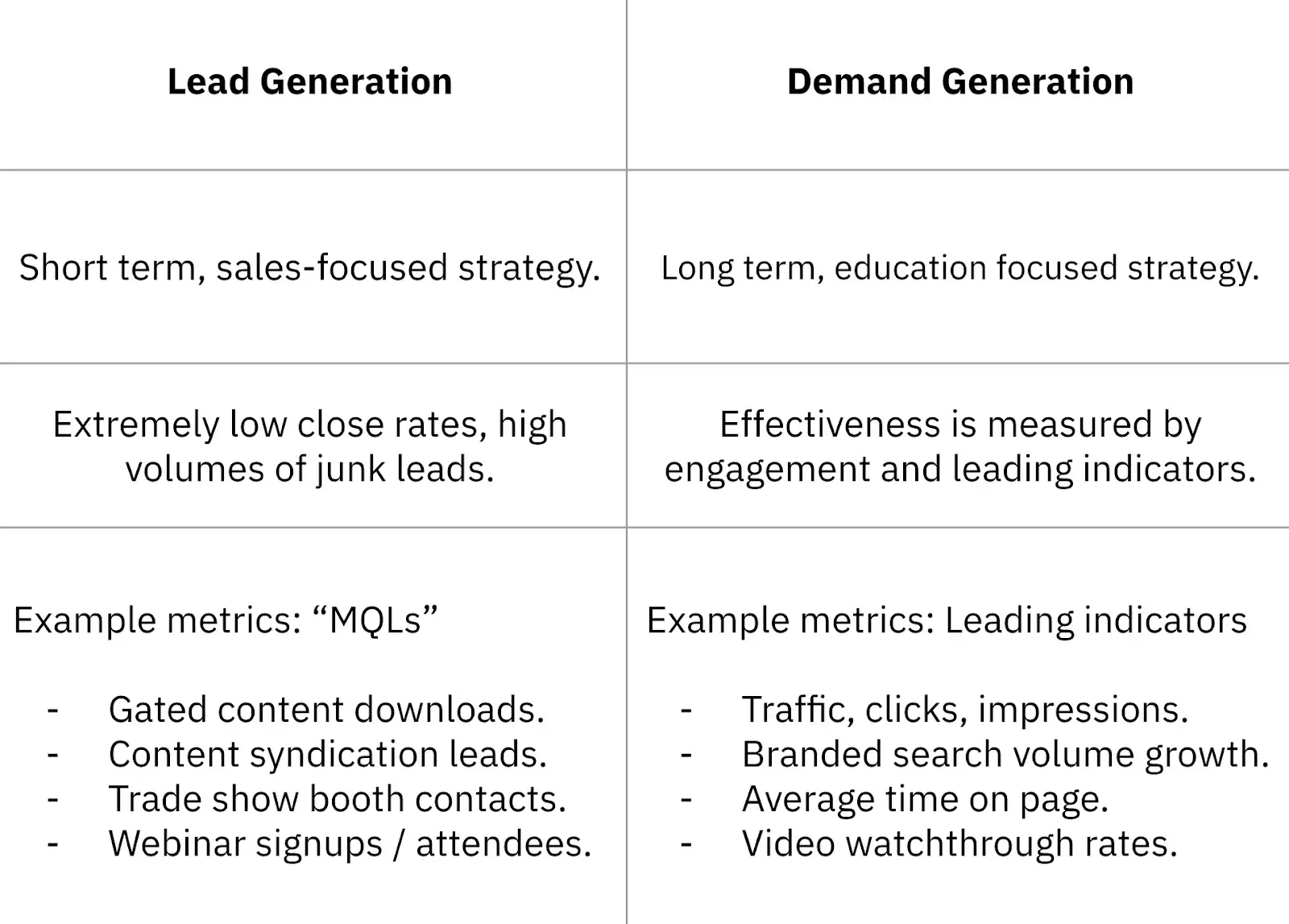
Why are most lead generation strategies unsuccessful?
The reality is that traditional lead generation is riddled with inefficiencies, outdated tactics, and a fundamental misunderstanding of today’s B2B buyers.
Let’s explore six reasons most lead generation strategies can be unsuccessful.
- Misaligned to the modern-day buyer’s journey. Gartner research reveals that B2B buyers only spend 17% of their time talking to sales — yet most lead generation efforts are geared toward ushering prospects into a sales conversation. According to Digital Zone, a multi-channel approach is more essential, given that most B2B buyers require at least 3-10 interactions before seriously considering a brand.

- Too many uninterested leads can overwhelm sales teams. Many marketing teams are so focused on driving high lead volumes that they end up handing off unqualified prospects to sales. As a result, sales teams are overwhelmed with leads that aren’t ready to buy, which not only hurts morale but also leads to burnout. The repetitive cycle of chasing low-intent leads causes frustration and inefficiency, ultimately harming the company’s ability to close meaningful deals.
- Creates a hostile environment between sales & marketing. Where the classic conflict of “marketing is sending us garbage leads” and “sales can’t close deals” results in tremendous inefficiency.
- Damages brand perception among research-stage buyers. These buyers may eventually request a demo when they are motivated and ready to speak to sales. B2B buyers in the research stage don’t want to be rushed into a decision. If they download a whitepaper and are immediately bombarded with sales calls, it creates a negative brand experience.
- Gating content generates top-of-the-funnel leads. Gating content — like whitepapers, webinars, and case studies — is a standard lead generation tactic. But just because someone downloads a report doesn’t mean they’re ready to buy. Instead of gating everything, I recommend using a strategic mix of free and gated content, ensuring they provide value before asking for an email address.
- Over-reliance on lead scoring and lead nurturing. With this method, marketing teams are placing a bet on their ability to use behavioral data and intent signals to predict the right sales triggers. Without deeper engagement signals — such as multiple high-intent actions (e.g., visiting pricing pages, comparing competitors, or requesting demos) — lead scoring can be misleading, resulting in wasted efforts on leads that will never convert.
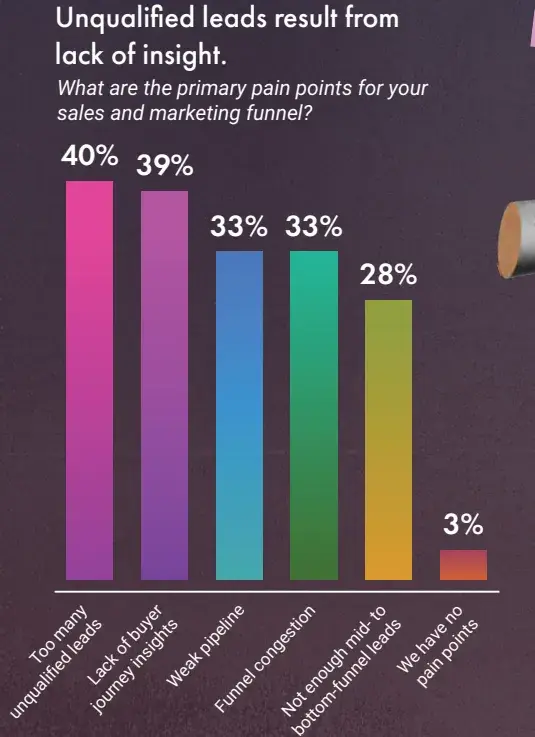
If you’ve been struggling with lead generation, try HubSpot’s lead generation tool. Built-in analytics and reporting then make it easy to learn which pages, offers, ads, and traffic sources are driving the most conversions.
Gated Content: Bad Practices vs. Good Practices
Is gated content an acceptable lead generation tool for demand generation?
Let’s start by looking at the biggest drawbacks of gated content:
- Lack of page views and traffic.
- No SEO benefit or boost.
- The form deters people from downloading content.
- No brand visibility.
But if you’re going to march on with gated content, it should be done for ABM warm-up and not direct response sales follow-up.
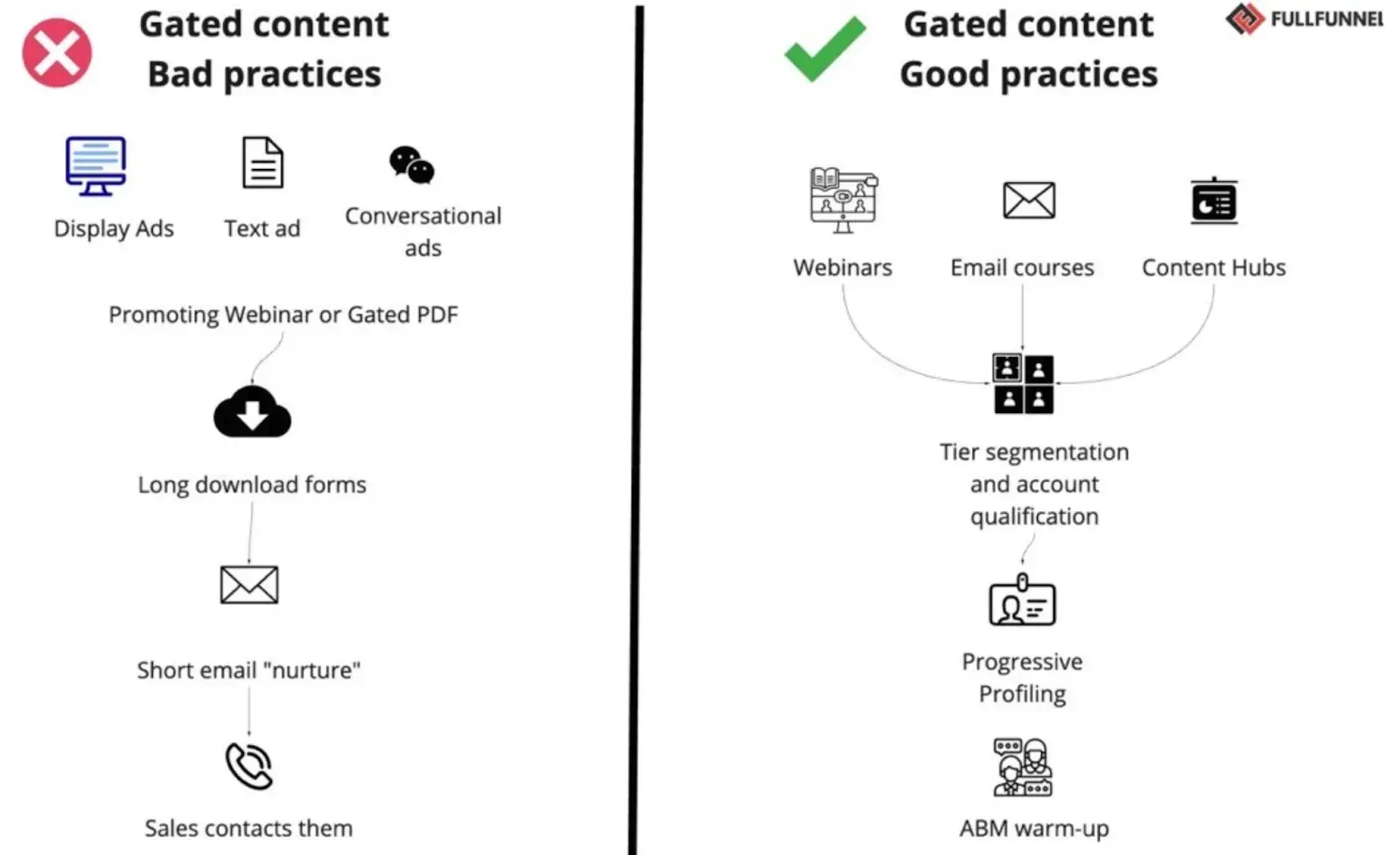
Gated content — used correctly — can offer the following benefits:
- Capturing lead contact information and growing your email list.
- Personalized lead nurturing based on the content each lead downloaded.
- Email list segmentation.
- Provides analytics and insights into customers.
- You can offer further free content, invitations to webinars, and access to your sales team when the leads are ready.
The Role of Inbound Marketing in B2B Demand Generation
Inbound marketing is a key component of any high-performing demand generation campaign. However, this is no longer about content calendars or the AIDA framework.
Instead, it’s about alignment with sales to properly respond to a buyer’s intent to purchase (declared intent), while orchestrating and facilitating the desired purchasing experience.
Today, with inbound marketing, you are either capturing demand or creating demand.
Let’s explore what that means.
Demand Capturing: Intent Channels and Content Examples
Capturing demand means responding to and fulfilling existing customer needs or wants. I find it best to show up where your target audience is already looking. Here are some resources you can leverage to make your offering easier to find:
- Demand Capture. Top Email Marketing Services, Best ETL Tools, Identity Protection Companies, ERP Integration Tools.
- Verticalized Demand Capture. CRM for Real Estate, SEO for Startups, QA Metrics for Software Testing, VoIP for Enterprise.
- SEO. Bottom-of-funnel demand generation strategy — this can be summarized as content marketing that creates blogs and landing pages for purchase-intent keywords.
- PPC. Bidding on commercial intent keywords to attract your target audience while they are solution-narrowing.
- Conversion rate optimization (CRO). A practice by which marketers run testing programs to increase conversion rates against high-intent website traffic.
- Review Websites. G2, TrustRadius, and Gartner. Anywhere your buyer personas go to read in-depth peer reviews and ratings of your brand, products, and services.
- Affiliates & Aggregators. PCMag, US News, Business.com, TechRadar, etc.
- Intent Data Providers. Bombora, 6Sense, DemandBase, etc.
Demand Creation: Education Channels and Content Types
Creating demand means generating interest and desire for your offering before customers are actively searching. I like to think of this as “soft” marketing — showing up in your audience’s space to introduce them to your brand and products. Here are some ways you can do that:
- Social Media Platforms. LinkedIn, X, TikTok.
- Influencer Marketing. Brand awareness or product launch campaigns with relevant influencers in your niche.
- Email Marketing. Newsletters, content promo, nurture sequences, and event invites.
- Online Communities. The Hustle, Sales Hacker, Demand Curve.
- Offline Media. Direct mail, NYC subway ads.
- Offsite Channels. Guest posts, press, and thought leadership.
- Audio Channels. Podcasts, interviews, radio advertising.
- Video. YouTube, LinkedIn, Vimeo, Wistia, Loom.
- Events. Webinars, live hangouts, virtual conferences.
- Conferences. INBOUND, SaaStr, Dreamforce, among others.
- Forums. Reddit, Quora, Slack, Discord.
The Role of Sales in B2B Demand Generation
Rewind to five years ago and ask anyone about demand generation — they’d tell you it was marketers disguised as salespeople running lead generation tactics via marketing automation.
And that’s because marketing used to be a service organization to sales, until B2B executives realized that marketing should be a strategic partner — not an order-taker.
Today, outbound-focused demand generation is not about high-volume cold outreach with automated follow-up sequences. Instead, it’s about ABM (account-based marketing), the inverted marketing funnel.
I find the most successful companies recognize that sales and marketing must work together to educate, engage, and build relationships with potential buyers long before a purchase decision is made.

Instead of a top-down inbound marketing approach, ABM is a bottom-up marketing strategy that collaborates with sales to engage with high-quality leads and target accounts during complex B2B sales cycles.
Revenue teams have learned that full-funnel marketing with a hybrid mix of inbound, outbound, and lifecycle marketing is the right balance for a high-performing demand generation program.
Metrics and KPIs for Measuring Success
Your demand generation marketing efforts should be guided by a north star: lead quality.
In addition to understanding key SaaS metrics, I’ve gathered some important questions to ask:
- Which channels are driving highly qualified leads?
- Which lead types most often convert into a qualified sales pipeline?
- What percentage of our opportunities convert into paying customers?
- What percentage of our paying customers stick around long enough to become profitable?
- Which marketing channels are driving opportunities with the best LTV?
- How do we generate more qualified opportunities from the best channels?
- How do we champion full-funnel pipeline visibility?
- How do we hold sales accountable for working the leads properly?
- How can we develop an effective feedback loop between marketing & sales?
Leading Indicators: Example Metrics
- Brand search volume.
- Your brand vs. competitor brand search volume.
- Organic traffic to high-intent website pages.
- Direct traffic (people type your website URL into the browser).
- Entrances and engagement on your feature/solutions pages.
- Referral traffic from other relevant websites and social platforms.
Lagging Indicators: Example Metrics
- Assisted conversions: pages consumed “on the path” to becoming a conversion.
- Website traffic to conversion rate (declared intent).
- Qualified demo to sales opportunity rate.
- Proposal sent to closed/won rate.
- Average deal size.
- Sales pipeline velocity.
- Cost per acquisition (CPA).
- Customer lifetime value (CLV).
Declared Intent vs. Assumed Intent
Digital marketing has evolved away from direct response, lead generation focused marketing campaigns to a more holistic approach that covers brand awareness, demand nurturing, and demand capturing across the entire sales funnel.
With this in mind, I think it’s worthwhile to think about the CTA buttons on your website — and what constitutes declared intent versus assumed intent.
Run a “declared intent audit” to check if assumed intent leads are being treated as declared intent. If yes, that’s a clear misalignment of sales experience and buyer expectations.
I think this is the decisive test which confirms if your marketing team truly understands the customer journey — a critical component of any demand generation program.
Where to Start With Your Demand Generation Strategy
Once you’re acquainted with your buyers’ needs and can anticipate marketing trends, you can fuel your marketing programs with enhanced levels of personalization.
To begin with your demand gen strategy, get to know your customers and conduct qualitative research through user feedback and conversations. If you’re struggling to understand your prospects’ needs, pick up the phone and ask.
Our free ebook below, “An Introduction to Lead Nurturing,” is a great starter guide to converting website visitors into leads for your business. I like it because it offers practical advice and clear guidance on lead generation essentials, including building an SEO strategy to attract leads, lead scoring, and nurturing techniques.
Then, from there, if you’re looking for a place to start, I’d recommend marketing automation software. It can help you run A/B tests, choose the right content, and customize timing for each of your marketing campaigns and customer segments.
Editor's note: This post was originally published in January 2014 and has been updated for comprehensiveness.
Lead Generation



![What is a lead magnet? 20 lead magnet ideas and examples [+ step-by-step]](https://53.fs1.hubspotusercontent-na1.net/hubfs/53/lead%20magnet%20represented%20by%20a%20magnet.webp)

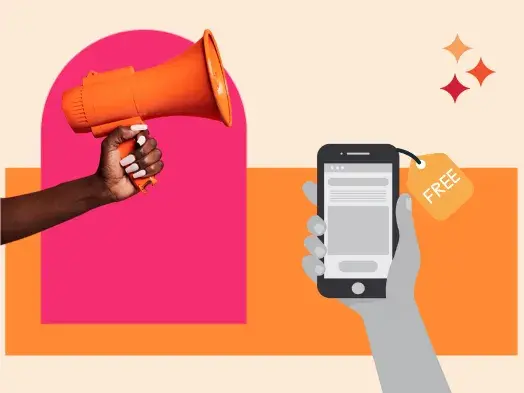


![Gated Content: What Marketers Need to Know [+ Examples]](https://53.fs1.hubspotusercontent-na1.net/hubfs/53/UNGated%20Content.png)

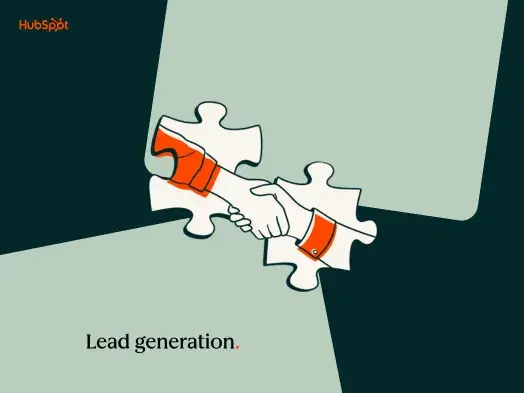
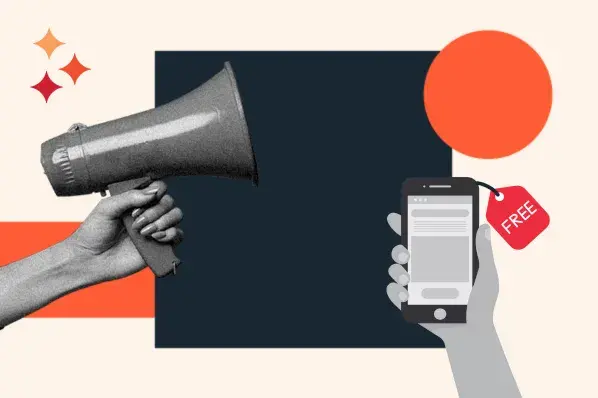
![Lead Generation Content: Top Types to Use [Data + Expert Tips]](https://53.fs1.hubspotusercontent-na1.net/hubfs/53/lead%20generation%20content.webp)